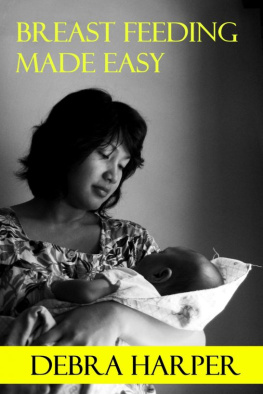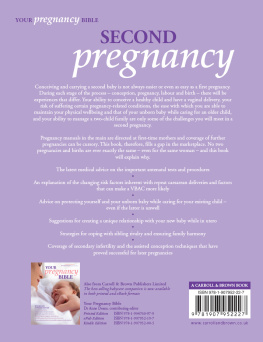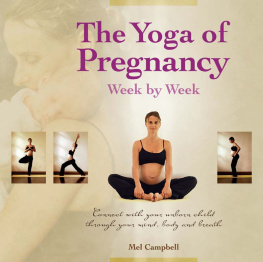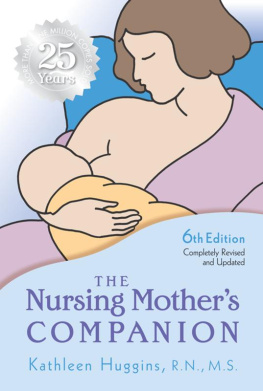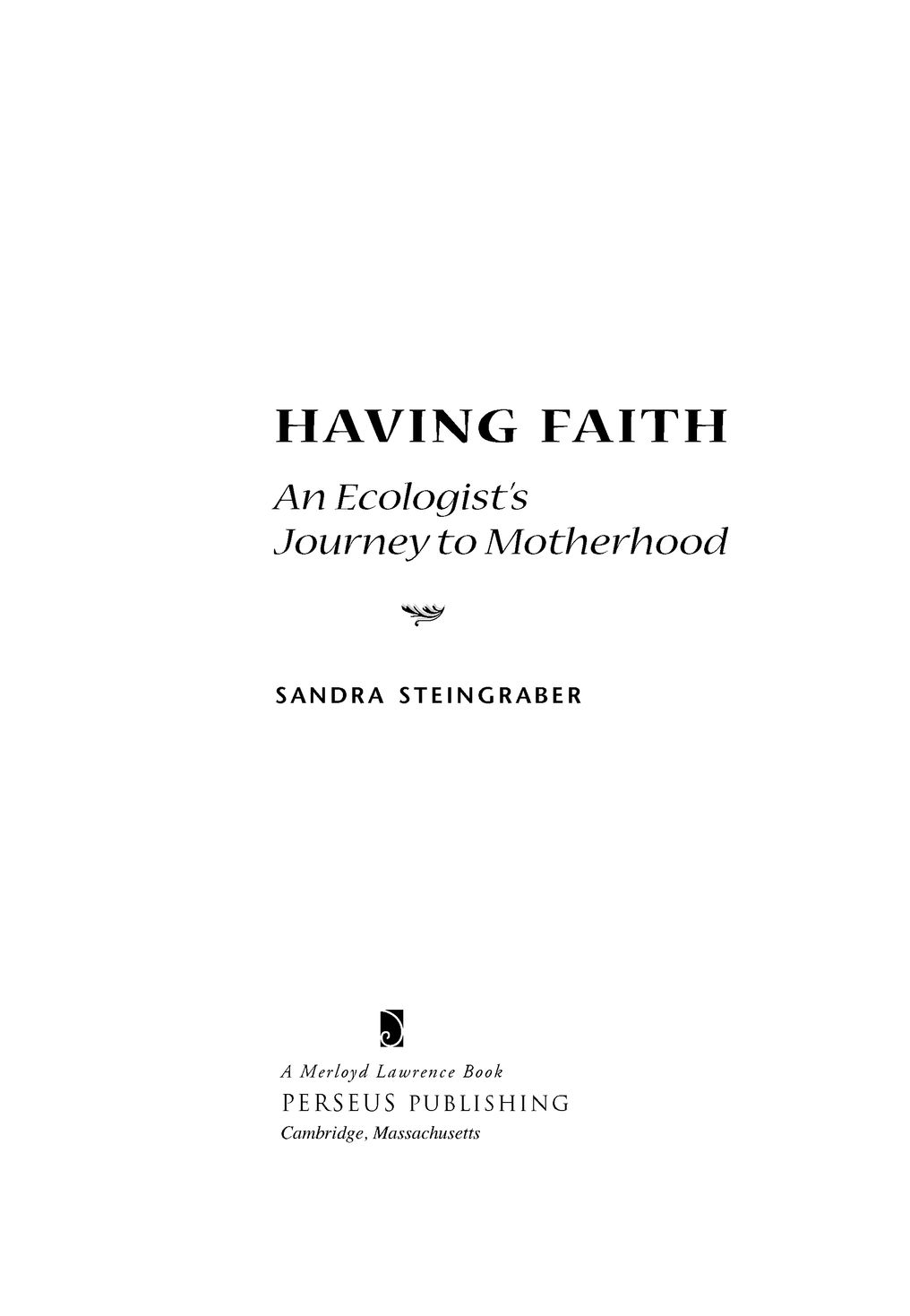Table of Contents
for Jeff and Faith
Preface
Every woman who becomes pregnant brings to the experience her various identities. I am an ecologist, which means I spend a lot of time thinking about how living things interact with the environments they inhabit. When I became pregnant at age thirty-eight, I realized, with amazement, that I myself had become a habitat. My womb was an inland ocean with a population of one.
So I turned my scientists eye inward and began to study in earnest the biological drama of new life being knit from the molecules of air, food, and water flowing into a womans body from the outside environment. I looked also at the environmental threats to the bodies of pregnant and breastfeeding mothers. How do toxic chemicals cross the tough sponge of the placenta? How do they find their way into amniotic fluid? How do they enter the milk-making globes in the back of the breast? What are the effects for the child of these earliest encounters with synthetic chemicals? The answers to these questions seemed essential to my new responsibilities as an expectant mother. And they all pointed to a simple truth: protecting the ecosystem inside my body required protecting the one outside.
This book is the result of that most personal of ecological investigations. Part I describes the unfolding events of fetal development, month by joyful month, the nine chapters named for the traditional names of each months full moon in the agricultural cycle. Along the way, I explore various mysteries: the puzzling malaise of morning sickness; the historical failure to recognize fetal toxicants; the experience of holding in my hands a tube of my own amniotic fluid; the origins of birth defects; and the ways in which certain chemical contaminants can sabotage fetal brain development. As birth nears, I turn my attention to the ecology of the birth process itself. As I try to plan for a natural childbirth within a large research hospital, another one of my identitiescancer survivorplays a key role in my decision-making.
Next, Having Faith takes a close look at the symbiosis of breastfeeding. Part II thus begins with the reestablishment of the biological bond between mother and child as the breast takes over from the placenta the task of nurturing the infant. In Part II, I also take a close look at the evolutionary origins of human breast milk, with its disease-fighting properties and unsurpassed ability to guide the brain development of nursing infants. Finally, I examine how the goodness of breast milkand indeed a mothers very ability to produce itis now being compromised by the presence of toxic chemicals in the human food chain.
The source notes at the end of the book direct readers to the many hundreds of scientific papers, monographs, reports, and texts that informed my analysis. Those interested in more detailed biological descriptions can seek them here. All this research, however, can really be summed up in a few simple sentences. In the words of Katsi Cook, a Native American midwife, a womans body is the first environment. If the worlds environment is contaminated, so too is the ecosystem of a mothers body. If a mothers body is contaminated, so too is the child who inhabits it. These truths should inspire us allmothers, fathers, grandparents, doctors, midwives, and everyone concerned about future generationsto action.
January 31, 2001
Ithaca, New York
PART ONE
September 26, 1998, late morning
In the hospital sol arium, sunlight pours through the glass like a warm shower. I have brought you here, little one, to show you the sky, blue as cornflowers, and the stone buildings of Boston, city of your birth. But you are sleeping and show no sign of changing your mind about sleeping.
You spent last night nestled in the crook of my arm. I curled around you so that the curves and bumps of your body, familiar to me as my own, pressed against my belly, pressed against me now from the outside instead of from the inside. (I recognize especially the curve of your heel. For many weeks I felt it through my own skin, just under my left rib.) At 3 A.M. you awoke. Your father said he looked over from his cot and saw you staring at a square of light on the wall. While I slept he held you in his arms and made shadow puppe ts for you. He said that you watched intentlyhe emphasized intentlyand that, after he had run through his entire repertoire, you turned your attention to his face, holding him in a calm gaze. He said he knew in that moment what kind of person you would become. He said you have an observant, inquisitive spirit.
Your left hand wriggles out now from the top of your swaddling blanket, but still you do not wake. The patter n your veins make on the back of your hand is identical to my own. I cannot stop staring at you. No wonder mothers claim they cannot remember their labors clearly. You fill all my brain cells. Just the sound of your breathingwhich is a miraclerequires my complete attention. The sea smell of your hair. The pulse behind your ear. The butter of your skin. I am so busy memorizing you that I cannot recall anything about my life before today .
In the world outside this glass room, songbirds are feeding and resting in the trees. Some will take off tonight and not land until they reach Venezuela. Sandpipers, plovers, and broad-winged hawks have already left for Patagonia and Panama. Bats are heading for caves in Kentucky and Tennessee. Out in the Atlantic, hump back whales pass by on their way to the Caribbean. Even now, Canada geese are honking toward us from Quebec. It is a good day for the beginnings of jour neys.
Every time I look at you, I think, Now I cannot die.
I decide your name is Faith.
Old Moon
JANUARY
In a faculty bathroom on the campus of Illinois Wesleyan University, I am trying to pee on a stick. Outside, the first snowfall of winter is coming down thick and fast, which is a good thing because I have a seminar to teach downstairs in five minutes, and the snowwith all the required stomping of boots and shaking of scarvesshould keep the class preoccupied for a while.
When I was a student here myself, twenty years ago, I always wondered what went on in private, professorial chambers like this one. Now that I have re turned for a semester as a visiting writer-in-residence, accompanied by my visiting artisti nresidence husband, Ive been walking through lots of familiar old buildings and opening doors to rooms I never knew existed. The provosts inner office, for instance. The faculty dining hall. And now this dark-paneled, wide-windowed lavatory with its crooked floor and oversized porcelain fixtures.
I focus on the chortling sounds of the radiator. Urine splashes over my fingers, and I feel the stick bend down like a divining rod.
In my office, a few minutes earlier, I finished an interview with the alumni magazine editor, during which time I was completely absorbed with the question of whether or not I was pregnant. My period is not due for another two days, and yet I have a hunch. So as soon as he left, I walked across the street to the pharmacy where, as a college student, I had bought contraceptive devices. I used to stand in the checkout lane and worry that one of my professors would walk in and see me with a handful of condoms and spermicides. Today, with the same air of fake casualness, I sidled up to that identical counter holding a home pregnancy test kit, hoping that none of my students would walk in before the clerk could slip that too-pink box safely into a bag.


